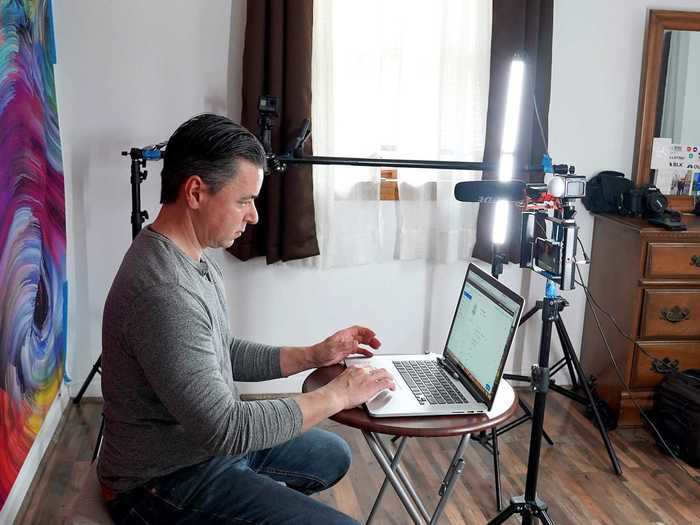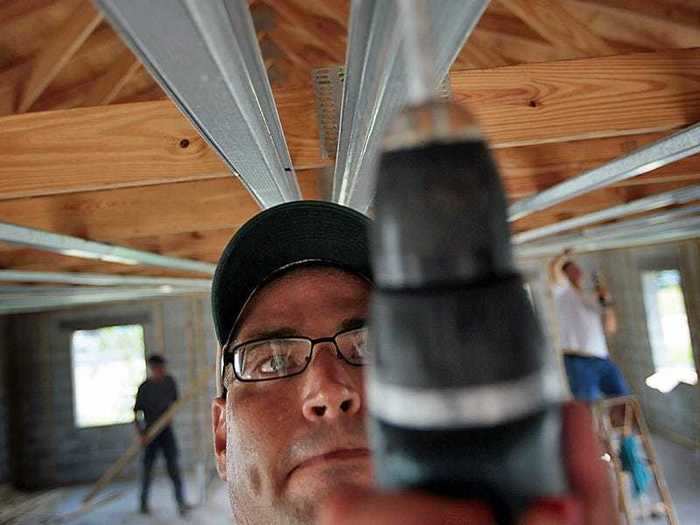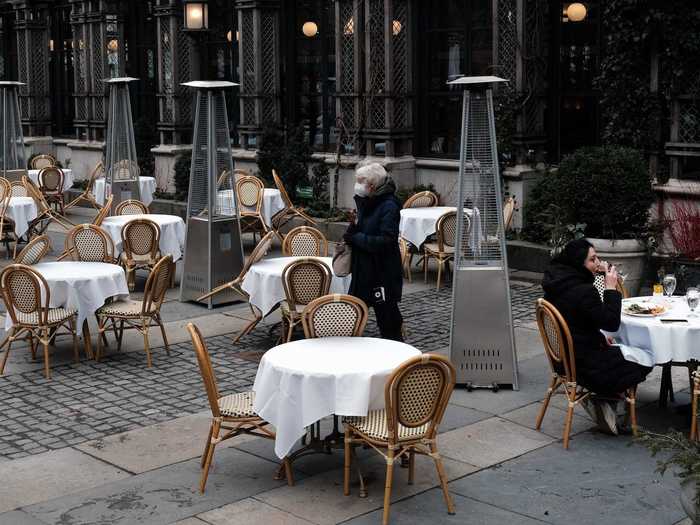A customer pays for his purchase in the doorway of Dave's New York, a retail store, as phase one of reopening after lockdown begins, during the outbreak of the coronavirus disease (COVID-19) in New York City, New York, U.S., June 8, 2020.Brendan McDermid/Reuters
- Some elements of the pandemic-era economy are likely to stick around well after the recovery.
- Experts warned the post-crisis economy would be different, and now it's becoming clear how.
- From remote work to a red-hot housing market, 4 fundamental shifts could be permanent.
The post-pandemic economy is taking shape.
Fifteen months after the US first plunged into lockdown, the economy is well on its way to a complete reopening. Spending is up, businesses are rehiring, and Americans are - slowly - returning to work. Economists largely agree that economic output will grow at the fastest rate since the 1980s this year.
Yet experts have warned the recovery will occur in a country that is permanently changed. Americans should brace for "a different economy," Federal Reserve Chair Jerome Powell said in an April conference hosted by the International Monetary Fund.
Kristalina Georgieva, managing director of the IMF, said the post-pandemic economy could yield improvements if policymakers are prepared for substantial change.
"It doesn't mean a worse economy if we think well in advance, if we think about educational attainment, if we think about flexibility for people entering the labor market, and if we think about where growth is going to come from," she added during the conference.
And while the US is far from completing its recovery, some fundamental shifts are increasingly clear. Here are three pandemic-era changes that could turn permanent as the country enters a new normal.
1. Remote work becomes the norm
A video producer works from his at-home studio to conduct remote interviews with talent on April 19, 2020 in Franklin Square, New York.
Eric Stringer/Getty Images
Most of the US has reversed restrictions that kept employees from the office, but not all companies are mandating in-person work like they did in February 2020.
As much as 71% of the US workforce telecommuted some or all of the time during the coronavirus crisis, according to an October survey from Pew Research. Of the 5,858 American adults surveyed, 54% said they want to work from home after the pandemic ends.
Business leaders themselves are embracing remote or hybrid work. The switch to flexible work structures is "a permanent civilizational shift," venture capitalist and tech entrepreneur Marc Andreessen wrote in a recent blog post, while Facebook CEO Mark Zuckerberg has said he'll work remotely for at least half of 2022, saying it made him "happier and more productive at work." Facebook told its 60,000 workers in June they only need to work from offices 50% of the time. It was one of many giant firms to give its workers that kind of permission.
2. A persistently hot housing market
The shift to remote work made housing hot, as Americans drove outsize demand for new and existing homes. The rally intensified further as mortgage rates hit multiple record lows through the end of 2020.
That boom has since run out of steam, but not for insufficient demand; decades of chronic underbuilding left the market with insufficient supply. After months of surging sales, nationwide inventory sank to record lows and prices leaped at their fastest pace since the housing bubble of the mid-2000s.
The market needs as many as 6.8 million new homes to balance out supply over the next decade, the National Association of Realtors said in June. That would require a 27% jump in homebuilding activity, and economists aren't optimistic builders will rise to the occasion. The lingering gap between home supply and buyer demand will likely keep home prices climbing at an elevated rate for years, the Urban Land Institute said in May.
3. Service jobs are out of fashion
Empty tables stand at a restaurant in Manhattan on March 01, 2021 in New York City.
Spencer Platt/Getty Images
Jobless are largely avoiding the service industry amid reopening.
The pandemic exposed a handful of weaknesses throughout the sector. Employees risked exposure to COVID-19 just by showing up to work; wage growth remained stagnant; and conditions in retail and food service jobs worsened as businesses pushed to do more with fewer workers.
Surveys show people are looking for better pay, conditions, or both. Separately, quits soared to a record-high 4 million in April, with most occuring in the retail, food services, and accommodation industries.
Service businesses are catching on. Large-scale employers including Chipotle, McDonald's, Amazon, and Under Armour all raised their starting wages in recent months as they rush to attract workers. Others are offering perks ranging from signing bonuses to fitness machines. To be sure, this could be a temporary hiccup during a reallocation of the workforce.



